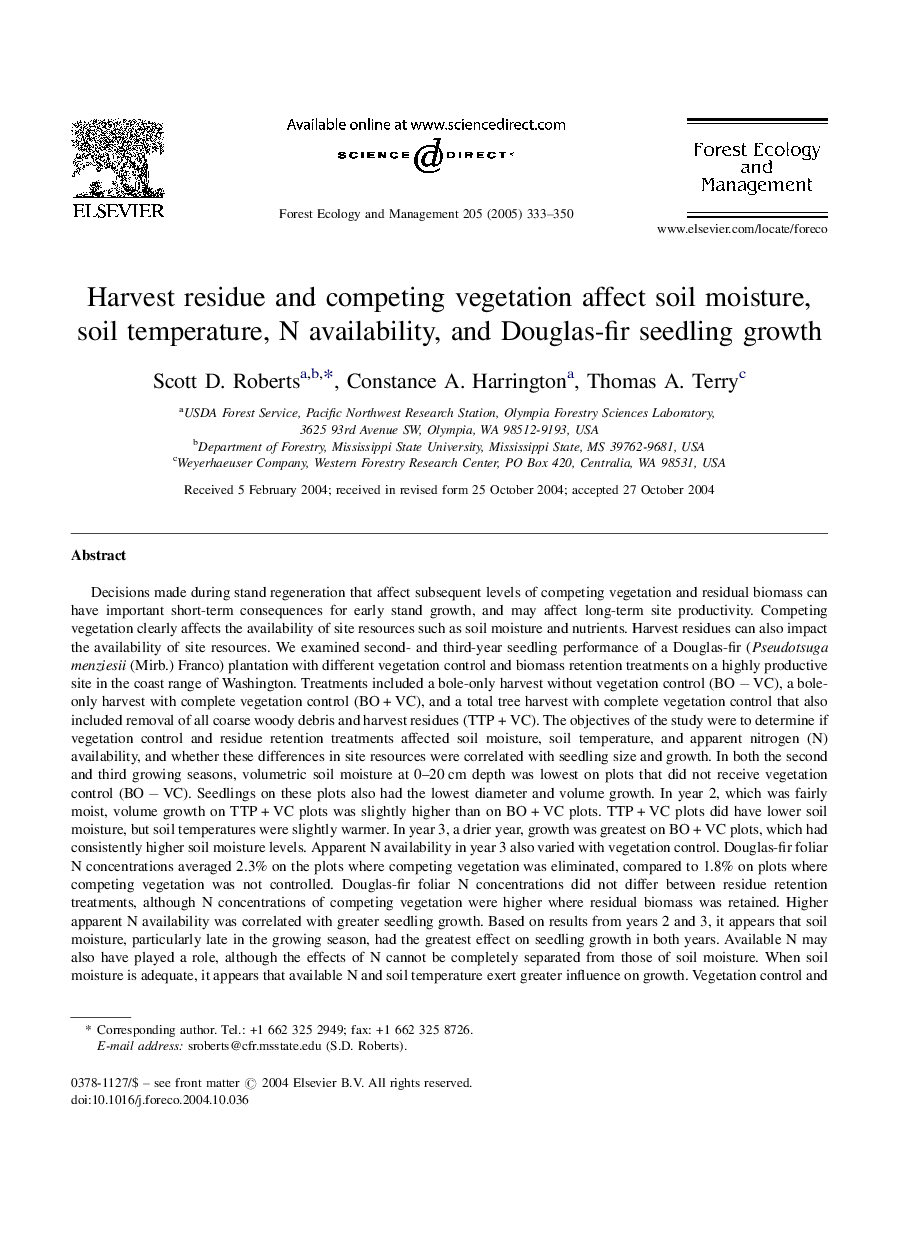| Article ID | Journal | Published Year | Pages | File Type |
|---|---|---|---|---|
| 9620515 | Forest Ecology and Management | 2005 | 18 Pages |
Abstract
Decisions made during stand regeneration that affect subsequent levels of competing vegetation and residual biomass can have important short-term consequences for early stand growth, and may affect long-term site productivity. Competing vegetation clearly affects the availability of site resources such as soil moisture and nutrients. Harvest residues can also impact the availability of site resources. We examined second- and third-year seedling performance of a Douglas-fir (Pseudotsuga menziesii (Mirb.) Franco) plantation with different vegetation control and biomass retention treatments on a highly productive site in the coast range of Washington. Treatments included a bole-only harvest without vegetation control (BO â VC), a bole-only harvest with complete vegetation control (BO + VC), and a total tree harvest with complete vegetation control that also included removal of all coarse woody debris and harvest residues (TTP + VC). The objectives of the study were to determine if vegetation control and residue retention treatments affected soil moisture, soil temperature, and apparent nitrogen (N) availability, and whether these differences in site resources were correlated with seedling size and growth. In both the second and third growing seasons, volumetric soil moisture at 0-20 cm depth was lowest on plots that did not receive vegetation control (BO â VC). Seedlings on these plots also had the lowest diameter and volume growth. In year 2, which was fairly moist, volume growth on TTP + VC plots was slightly higher than on BO + VC plots. TTP + VC plots did have lower soil moisture, but soil temperatures were slightly warmer. In year 3, a drier year, growth was greatest on BO + VC plots, which had consistently higher soil moisture levels. Apparent N availability in year 3 also varied with vegetation control. Douglas-fir foliar N concentrations averaged 2.3% on the plots where competing vegetation was eliminated, compared to 1.8% on plots where competing vegetation was not controlled. Douglas-fir foliar N concentrations did not differ between residue retention treatments, although N concentrations of competing vegetation were higher where residual biomass was retained. Higher apparent N availability was correlated with greater seedling growth. Based on results from years 2 and 3, it appears that soil moisture, particularly late in the growing season, had the greatest effect on seedling growth in both years. Available N may also have played a role, although the effects of N cannot be completely separated from those of soil moisture. When soil moisture is adequate, it appears that available N and soil temperature exert greater influence on growth. Vegetation control and residue retention can influence all three of these factors. The relative importance of each factor may depend on the year-to-year variation in environmental conditions.
Related Topics
Life Sciences
Agricultural and Biological Sciences
Ecology, Evolution, Behavior and Systematics
Authors
Scott D. Roberts, Constance A. Harrington, Thomas A. Terry,
